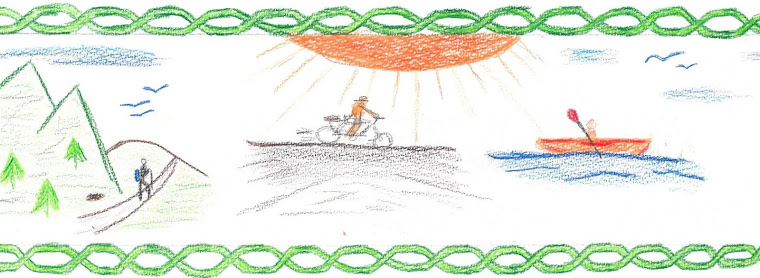Lectionary Ruminations 2.5 is a further revision and refinement
of my Lectionary Ruminations and Lectionary
Ruminations 2.0. Focusing on The Revised Common Lectionary Readings
for the upcoming Sunday from New Revised Standard Version (NRSV) of the Bible, Lectionary Ruminations 2.5 draws on over thirty years of pastoral
experience. Believing that the questions we ask are often more important
than any answers we find, without over reliance on commentaries, I intend with
sometimes pointed and sometimes snarky comments and Socratic like questions, to
encourage reflection and rumination for readers preparing to lead a Bible
study, draft liturgy, preach, or hear the Word. Reader comments are invited and
encouraged.
1:1 There are several ways the verb can be translated. Is it
“when God created” or “when God began to create” or something else
altogether? What difference does it make? Take a close look at the
user notes in one or two study Bibles, or better yet, the gleanings and notes
in The Torah. Why is this passage paired with Mark’s account of Jesus’
baptism?
1:2 What is the Hebrew word for “wind” and how else can the word be
translated? Where did the waters come from?
1:3 What, if any, is the significance of light being the first
thing created?
1:4 What if God saw that the light was not good? How did God
separate the light from the darkness?
1:5 Can there be day without night, or night without day?
1:1-5 How does one preach/teach this passage in a post Copernican and
postmodern world, especially considering there is at least one other Biblical
(and different) account of creation?
PSALM 29
29:1 Who are the heavenly beings?
29:2 What is the name of the LORD? What is holy splendor?
29:3 What does the voice of the LORD sound like? Are these the
waters of creation, the waters of the Exodus, or some other waters?
29:4 How are power and majesty related?
29:5 Is there anything special about the cedars of Lebanon?
29:6 What and where is Sirion?
29:7 How can a voice flash flames?
29:8 Where is Kadesh?
29:9 Has a storm ever compelled you to say “Glory!”?
29:10 How can anything sit enthroned over a flood?
29:11 How can the LORD, revealed in the storm, bless people with
peace, when storms are anything but peaceful?
29:3-11 How can one teach/preach using storm god imagery while
recognizing that storm god imagery is not the only imagery applied to the LORD?
Sleeping under a small tarp in the wilderness during a night time thunder and
lightning storm and hiking on a high wilderness ridge during a daytime thunder
and lightning storm has greatly influenced how I read this passage. What
are your experiences of storms and how do those experiences influence how you
understand this passage? How might survivors of recent hurricanes read these
passages?
ACTS
19:1-7
19:1 What do you know about Apollos? Why does Paul
mention him? Where is Ephesus? Was Paul surprised to find some disciples or was
he expecting to find some disciples?
19:2 How could someone be a disciple and never have heard about the
Holy Spirit? Why would Paul be asking this question?
19:3 Were these disciples actually baptized by John? If one was
baptized by John and later became a disciple of Jesus, would they have to be re-baptized
in the name of Jesus?
19:4 How did John’s baptism differ from baptism in the name of
Jesus?
19:5 Note that they were baptized in the name of the Lord Jesus, not
in “the name of the Father, and of the Son, and of the Holy Spirit.”
19:5-6 Did Paul baptize them with water or simply lay his hands on
them? What does it mean to speak in
tongues? What does it mean to prophesy?
19:7 “About” seems to be a relatively general term while “twelve”
seems to be very specific and perhaps points to the twelve tribes of Israel and
“the twelve” disciples of Jesus.
MARK
1:4-11
1:4 I much prefer the descriptive phrase “John the baptizer” rather
than the more usual “John the Baptist.” At least Mark agrees
with Acts regarding a description of John’s baptism.
1:5 “All the people of Jerusalem” seems to be hyperbole.
1:6 Where does this imagery come from and what does it point
to? Might locusts refer to something other than bugs?
1:7 As I have asked in a previous rumination, what is so special
about the thong of a sandal?
1:8 Might this be some literary foreshadowing, a reading of later developments
back into the text?
1:9 When were those days?
1:10 What do the heavens being torn apart look like? Is there
a difference between the Spirit “descending like a dove” and “descending as a
dove”? Did anyone other than Jesus see these things?
1:11 Did anyone other than Jesus hear this voice? What did the voice
sound like? Where and when will we read these or similar words again?
ADDENDUM
I am a Minister Member of Upper Ohio Valley Presbytery of the Presbyterian Church (U.S.A.) and am serving as the Pastor of the Bethlehem United Presbyterian Church, Wheeling, WV. Sunday Worship at Bethlehem begins at 10:45 AM. Here is Bethlehem United's Facebook address: https://www.facebook.com/Bethlehem-United-Presbyterian-Church-102482088303980

No comments:
Post a Comment